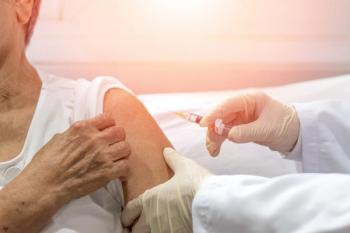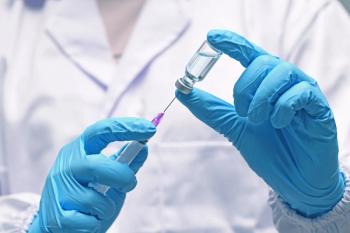
- Drug Topics September 2019
- Volume 163
- Issue 9
Biosimilars Need Access and Cost Examinations
Biologic medicines could lower spending by $153 billion by 2023.
Despite the passage of the Biologics Price Competition and Innovation Act of 2009, which provided a regulatory pathway for biosimilars, only 20 have been approved, and seven marketed, in the United States. The most recent was Kanjinti (trastuzumab-anns) for Herceptin (trastuzumab).
IQVIA expects biosimilars to lower overall spending on biologic medicines by $153 billion from 2019 to 2023 as a result of competition.
A study conducted by Avalere Health found that the availability of biosimilars could increase overall access to biologic medicines by an additional 1.2 million patients.
Slow Development, Launch of Biosimilars
“Developing and marketing biosimilars is an expensive proposition. It takes a significant investment in manufacturing expertise and a capacity to create these types of drugs,” says
Trending:
“In addition, the biosimilar approval process has taken some time for the FDA to build. Therefore, manufacturers have had to work on various aspects of development while FDA was making final decisions,” he says. “Now that the FDA and manufacturers have worked through 20 approvals, there is a greater level of awareness of what is required to be successful with this type of drug development.”
“The FDA does a good job with guidance; but, from a regulatory perspective, not many [biosimilars] have been approved or launched. The marketplace for biosimilars is not where it is expected to be by 2019,” says Juliana Reed, vice president of corporate affairs for Pfizer.
Targeting Misaligned Incentives
The Biosimilars Forum-an organization based in Washington, D.C.-has developed three proposals for promoting the use of biosimilars and for counteracting misaligned incentives and unfair reimbursement:
1.) Lower costs by eliminating a copayment for Medicare beneficiaries who choose a biosimilar.
The Forum estimates that would save patients $3.3 billion dollars in out-of-pocket costs over 10 years and save taxpayers $5.2 billion.
2.) Develop a physician-focused, shared savings program in which Medicare savings associated with prescribing a biosimilar is shared with providers.
Not only would that provide an incentive for providers but it could save as much as $3 billion in tax dollars over 10 years.
3.) Increase add-on payments for prescribers of biosimilars to incentivize their use by increasing the amount doctors in Part B are reimbursed for administering them.
The Forum estimates the United States could realize a savings of as much as $8.2 in health costs over the next decade.
Avalere has calculated that biosimilars could reach between 26% and 46% in market share if Medicare paid for beneficiaries’ out-of-pocket costs and could save billions by adding a payment bonus for providers for prescribing biosimilars.
Patents
Patent walls are one of the greatest barriers preventing biosimilars from entering the marketplace. Drug companies could create patent walls around their products by changing manufacturing processes, finding new indications for an approval, or by changing a drug’s dosage-all extending protection over a long period of time.
Continue reading on page 2...
Hausfeld says AbbVie holds about 136 patents for Humira (adalimumab), while the first biosimilar alternative isn’t due to hit the U.S. market until 2023.
The Physician Perspective
“The whole concept of biosimilars is completely new to providers. As a result, pharmacists, as drug information experts, have had to invest a lot of time to learn the nuances of the FDA’s approval process in order to educate prescribers, who are still becoming familiar with biosimilars and developing the necessary level of comfort to prescribe them to patients,” Lucio says.
Another challenge for providers, he says, is when a doctor selects a product (i.e., a biosimilar) different from what a payer chooses (i.e., the reference product or another biosimilar).
“When this happens, both parties have to do more work to manage the information exchange regarding which product will be used and reimbursed. For providers, the need to respond to various decisions across a range of payers could mean they have to carry multiple products (the brand and several biosimilars),” he says.
Read More:
Lucio says the willingness of physicians to use biosimilars varies by agent. For example, physicians have been less reticent to prescribe Zarxio (filgrastim-sndz)-biosimilar to Neupogen (filgrastim)-because it is easy to monitor, is administered daily, and presents immediate outcomes.
On the other hand, Lucio says biosimilar competitors, such as Inflectra (infliximab-dyyb) for Remicade (infliximab) are facing less uptake because their effect is harder to assess and reimbursement is more difficult to align.
Interchangeability
In May, the FDA published its Guidance for Industry entitled, “Considerations in Demonstrating Interchangeability With a Reference Product.” The guidance describes the regulatory pathway for biosimilars that can be substituted, without the involvement of a prescriber, for branded biologics. It assists in demonstrating that a proposed therapeutic protein product is interchangeable with a reference product for the purposes of submitting a marketing application.
Trending:
Without the option of interchangeability, biosimilar manufacturers are forced to compete with established products, which can add costs that are borne ultimately by the consumers,” Nelson says.
“Because there are no approved interchangeable biosimilar products on the market, patients will not receive an approved biosimilar if they are currently on therapy. There is no mandatory substitution at the pharmacy level as there is with small molecule products,” Nelson says.
He advocates for investigating a statutory change that requires treatment-naïve patients-those that have never received the particular biologic product in any form-to receive an approved biosimilar or the lowest-cost option of the prescribed product. Other proposals include creating a separate tier exclusively for generics and biosimilars, and for a cost-sharing program.
Continue reading on page 3...
Lucio doesn’t find interchangeability to be a real issue because the majority of competitive products are administered by a provider or through specialty pharmacy and not filled by a patient; thus, the pharmacy is not making a decision on which product to use. However, in the case of insulin, patients pick up their prescriptions at a pharmacy, making the choice of a biosimilar more relevant.
The Naming Conundrum
Naming biosimilars-the branded drug’s name and a unique, four-letter suffix-is a bone of contention among biosimilar advocates. The Biosimilars Council has urged the FDA to reverse course on its current proposal and rescind the suffix-based naming policy that serves as a barrier to biosimilar access for America’s patients.
Trending:
The Council asserts that suffixes could create a perception that there are meaningful differences between reference products and their biosimilars, along with patient and provider confusion because reference products don’t require a suffix. It also contends that suffixes could undermine interchangeability and fail to signify any safety benefits. A final ruling has not yet been issued.
Rebates’ Role
More than 90% of employer-sponsored plans covered a biosimilar of filgrastim in 2017, and more than 40% placed it on a preferred tier, according to the Institute for Patient Access; however, only about 7% had a biosimilar for infliximab on a preferred tier, according to Avalere.
“The issue is paying for them: the complex reimbursement process for biologics and biosimilars often disincentivizes the prescribing and use of biosimilars,” Nelson says.
“Biosimilars certainly have not achieved the tiered formulary status that is seen by generic drugs in the small molecule space. Due to the pricing and reimbursement system, a provider is sometimes reimbursed at a lower rate for using a biosimilar than for using the reference biologic-a disincentive to prescribing a biosimilar,” Nelson says.
“In the private sector, payers will reimburse based on a percent mark-up of the ASP of the drug that is actually administered. Because the ASP for a biosimilar is lower than that of the reference product, purchasers would prefer to use the more expensive reference biologic for which they could make more money on the mark-up,” Nelson says.
Read More:
Pharma companies are in litigation due to insurer-directed biosimilar exclusion contracts which opponents argue the practice is restricting entry and competition.
UnitedHealthCare covers Neulasta (pegfilgrastim) first, and if it proves ineffective, then the insurer will cover its biosimilar, Udenyca (pegfilgrastim-cbqv). That is opposite of how it works for traditional generics in which a patient must fail on a generic before being given a brand name drug.
“It’s not medically sound to fail first with a reference drug before being able to access a less expensive biosimilar,” Reed says.
“If the reference product doesn’t work, the biosimilar probably won’t either,” Lucio says.
“Biosimilars create a more competitive pricing environment among drug manufacturers that can help drive down drug costs. UnitedHealthcare evaluates each brand-name biologic and its biosimilar one-by-one and makes a coverage decision based on the lowest cost product in order to deliver lower costs to our members, clients and consumers,” says the insurer.
Articles in this issue
about 6 years ago
Biosimilars: Some Call for ‘Cautious Optimism’about 6 years ago
The Latest Autoimmune Disease Treatment Advancesabout 6 years ago
Unique Offerings Increasing Revenueabout 6 years ago
The Growing Problem of Pharmacy Desertsabout 6 years ago
What is a Pharmacy Desert?about 6 years ago
Patient Services are Crucial to the Economics of Pharmacyabout 6 years ago
New Video Marketing Toolsabout 6 years ago
Antimicrobial Stewardship: Protecting Global Healthabout 6 years ago
Antibiotic Counseling Pearls for the Community SettingNewsletter
Pharmacy practice is always changing. Stay ahead of the curve with the Drug Topics newsletter and get the latest drug information, industry trends, and patient care tips.


















































































































































